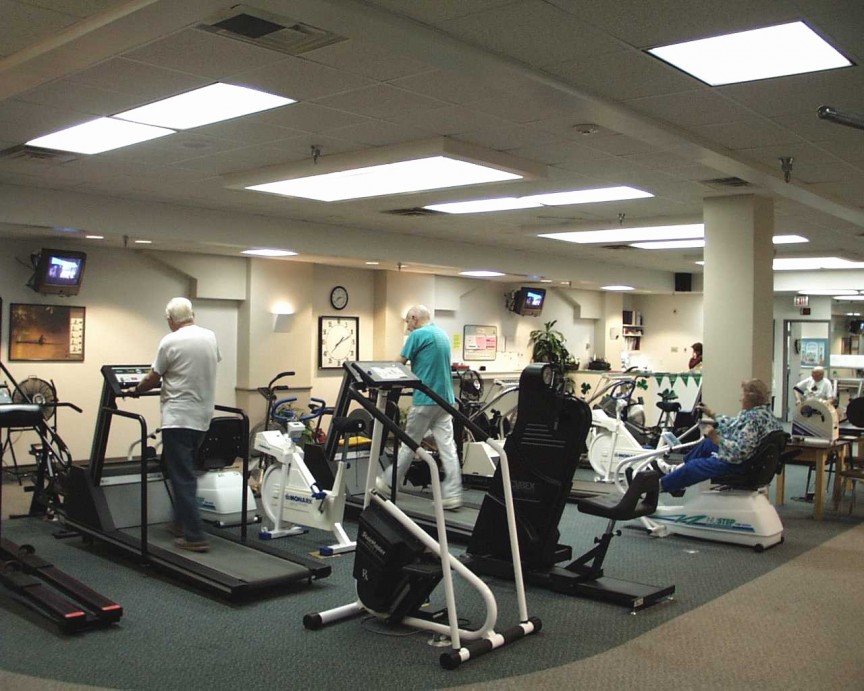Cardiac rehabilitation is a way for people who have had bypass, valve replacement, transplant, or other cardiac surgical procedures to get going again. A team of physicians, nurses, exercise physiologists and nutritionists will help you feel well again by leading you through a rehab program designed to fit your needs. There are four phases of cardiac rehabilitation.
PHASE 1
Phase I begins early after a cardiac event, while you are still in the hospital. This phase usually includes light supervised exercise such as walking the halls and stair climbing. Additional education is provided by hospital nurses and physical therapists. You should ask the hospital staff about risk factors, diet, medication instruction, sexual activity, exercise and normal life at home.
Keep in mind that all of these activities need to be in the 10 pound weight limit or less until six weeks after surgery.
PHASE II
Phase II is the early outpatient phase of cardiac rehabilitation. This phase usually requires a physician referral and involves telemetry monitoring. Entrance into the program is usually two to six weeks after discharge from the hospital. Most programs meet for one hour three or more times per week for 12 weeks. Phase II aims to return you to normal active life.
Phase II goals include :
- Improve functional capacity and endurance;
- Provide education of lifestyle changes;
- Reduce fear and anxiety about increased activity or exercise;
- Assist in making optimal social and psychological adjustments.
- Education is a major emphasis in the Phase II program and is accomplished through individual or group instruction. Educational topics include :
- Medication review ;
- Lifestyle changes and goal setting;
- Nutrition counseling with a registered dietitian;
- Stress management;
- Safe performance of activities including sexual activity, vocational and recreational pursuits
- Your spouse or other family members are encouraged to attend the education sessions with you.
PHASE III
Phase III is a continuation of the Phase II program. As a general rule, Phase III programs include participants who were discharged from the hospital six to 14 weeks earlier. A physician may refer you directly into this program without Phase II participation.
The goals of Phase III are:
- Provide an ongoing exercise program;
- Offer support necessary to make lifestyle changes;
- Achieve the desired goal, such as, independent lifestyle or return to work;
- Prevent progression of heart disease.
- The program offers monitoring of heart rhythm, rate and blood pressure before, during and after exercise. Records of your exercise routines are required. These routines generally occur three or more times per week.
PHASE IV
Phase IV is a wellness program for those who have completed any of the other phases. Phase IV is a means to continue working on improving lifestyle changes. You exercise three or more times per week with minimal staff supervision.
(From: Discharge instructions for heart surgery patients by The Society of Thoracic Surgeons)

